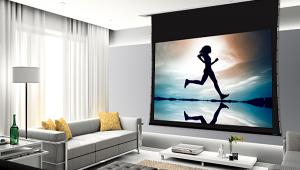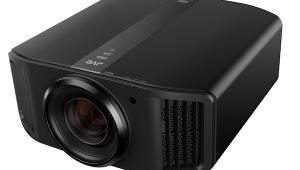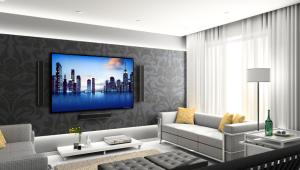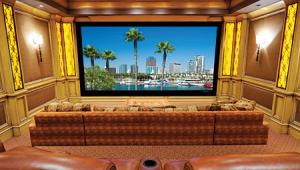Calculating Projector Brightness for Your Screen

Every once and a while I get an email questioning our choice of using a 100-inch screen to measure projectors. I feel this size is the best way to judge the performance of a projector, while at the same time offering you, our fair readers, a way to judge how bright the projector will be on your own screen.
This is easy to do, but it involves the maths.
OK, being an American publication, we use footlamberts, a measure of luminance (i.e. the light reflected off an object). Some would argue we should measure illuminance (i.e. directly measuring the light from the lens). While this would give us a chance to give you a direct “lumens” comparison to the projector specs, I find it to be a significantly less useful metric. First of all, all manufacturer specs are lies anyway, so what’s the point there? Also, illuminance measurements are less able to tell you how bright the projector will actually be in your home. Measuring in footlamberts also allows us to compare brightness to televisions, something I think most people know a lot better.
I’d certainly entertain luminance and illuminance arguments, but for my main numbers, I’m sticking with ft-L. Mostly because of this next part.
Calculating brightness
I measure projectors on a 102-inch, neutral gain (1.0), 16x9 screen. Let’s say I measure the JoeBob 2000 projector and I get 30 ft-L off my screen.
If you have a 100-inch 0.9 gain screen, it’s safe to assume the JoeBob will be roughly 27 footamberts. I say roughly as there are many factors we can’t account for, like the angle of the projector the screen, the angle of the screen to your eyes (as in, your seating height), the color and reflectiveness of the room, or the fact that no screen is going to be perfectly any gain. For that matter, we didn’t even address the obvious factors like your screen being slightly smaller (more on that in a second), and standard production variances in the projector. All of these errors are cumulative, so all brightness measurements are going to be rough. If I measure 30 ft-L will it be 10 ft-L or 50 ft-L on your similar size, similar gain, screen? No. I hesitate to give an exact margin of error, but 10% is probably optimistic. As I said, brightness comparisons are rough estimates. They’re still useful, though, as even a rough estimate is still probably more accurate than any lumen measurement from a manufacturer.
Beyond screen gain (itself a rough estimate), the math is less simple, but not badly. Most projectors project a rectangular image. Moving the projector further from the screen, or zooming out, makes the image larger. However, the same amount of energy is thrown at the screen. So an image that’s twice as big is going to be half as bright.
Keep in mind we’re dealing with area not diagonal, and I think this is what’s tripping up most emailers. Figuring out the screen area when you know the diagonal and the angles isn’t difficult, but let’s make it easy. My screen is 50-inches tall, and 88.9 inches wide (technically it’s a 2.35:1 screen that I use the center portion, but let’s not confuse the issue, as that doesn’t matter here).
Simple ah-rith-mah-tic shows us that this means my screen has an area of 4440.3 in^2 (Height x Width = Area).
If you have a 120 inch screen, this means your screen is 58.8-inches tall by 104.6-inches wide, for a screen area of 6145.8 in^2.
So if we take 4440.3/6145.8 we get 0.72, which means the JoeBob will be about 21.6 ft-L on your screen. Add in a 0.9 gain, and you get 19.5. If, instead, you have a 1.3 gain screen, that’s simple too: 21.6 x 1.3 = 28.08. Again, keep in mind manufacturer screen gain ratings are estimates, often optimistically so.
Everyone on board? With a larger screen, the light output drops. For these rough calculations, we’re assuming a linear fall off with screen area, which I think is fair given all the uncontrollable variables.
Or, if you just want the cheat sheet:
110-inch screen= x.86 my measurement
120-inch screen= x0.72
130-inch screen= x0.62
140-inch screen= x0.53
150-inch screen= x0.46
If you want to calculate for a different screen aspect ratio, use the width to figure out the size as if it were actually a 16x9 screen. This is because nearly all projectors I review project a 16x9 image, and you’re cropping height to fill a wider screen, not width.
Adding an anamorphic lens changes things a bit, but they offer their own optical issues, something I’ll be checking out in a future article.
For more fun with numbers, check out this website to figure out your screen area, dimensions, and anything else you want to calculate.



















































